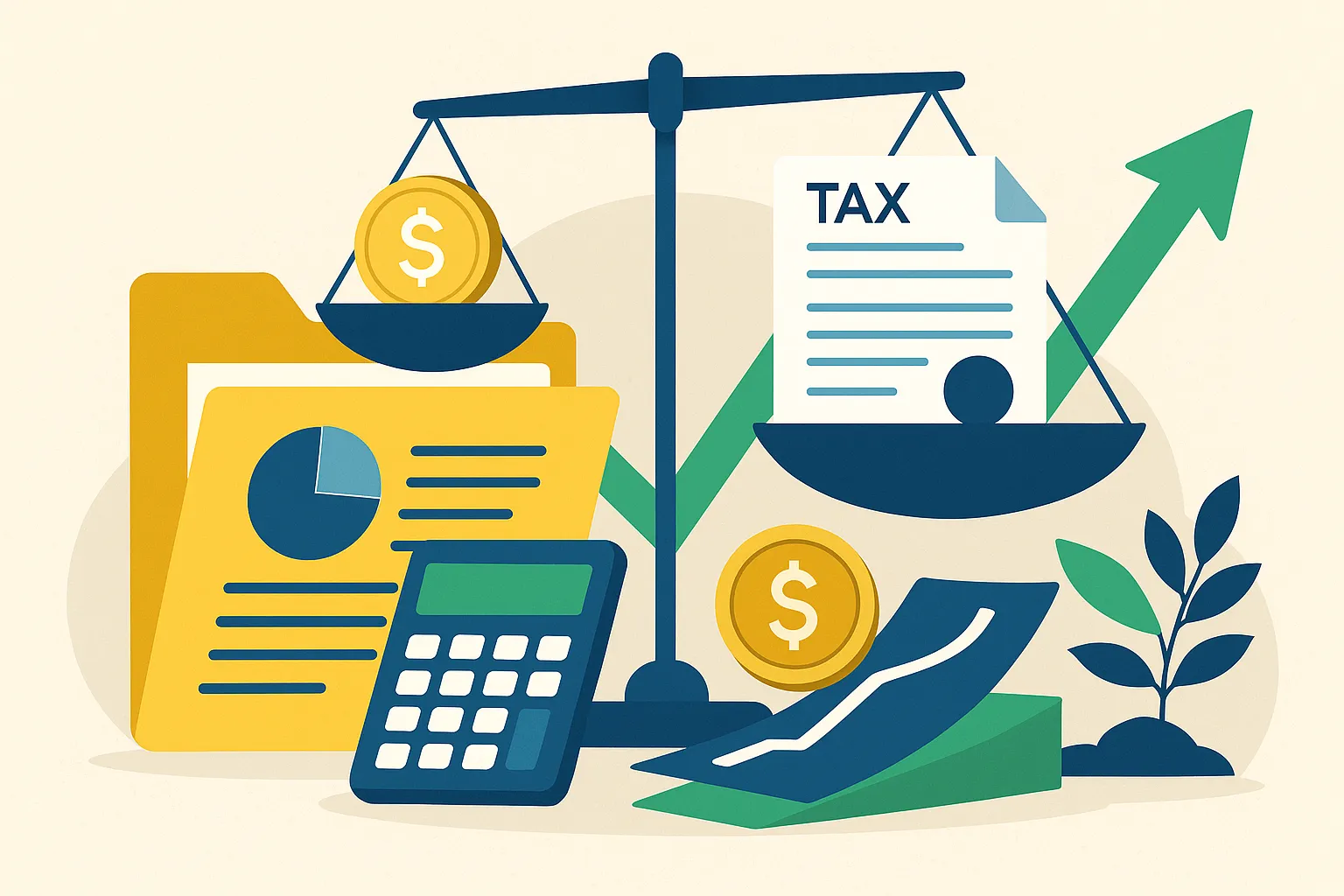Tax optimization comparison: PortfolioPilot vs Fidelity (TLH 2025)

According to the IRS, most filers can use up to $3,000 of net capital losses each year to offset ordinary income, with the rest carried forward - an anchor rule behind tax-loss harvesting (IRS Topic No. 409). Many investors hear “automatic TLH” and assume every platform works the same. It doesn’t. The real question is how each service identifies losses, avoids wash sales, and fits a person’s actual accounts and taxes. This comparison explains how PortfolioPilot and Fidelity approach TLH in 2025 - what’s done for the investor, what’s DIY, and where fees and account type change the experience.
Key Takeaways
- Fidelity’s TLH depends on the product. Self-directed investors get education and tools; proactive TLH typically shows up in separately managed/direct-indexing accounts, not across every offering.
- PortfolioPilot provides broker-agnostic TLH recommendations and tax impact estimates; the feature is included during the trial and then in paid plans. The platform gives guidance; investors choose whether to place trades.
- Wash-sale rules still apply across accounts and across “substantially identical” securities, which can erase a harvested loss if reinvested within 30 days.
- Not all accounts benefit. Retirement accounts (IRAs, 401(k)s) don’t get current-year TLH benefits; the focus is on taxable accounts.
Fidelity: TLH varies by path
Fidelity is a large ecosystem, and “tax-loss harvesting” shows up in different ways:
- Self-Directed + Tools. Fidelity publishes TLH explainers, year-end guidance, and even a login-gated TLH workflow for customers. This supports manual harvesting by the investor, not hands-off automation.
- Direct Indexing / Managed SMAs. Fidelity highlights that separately managed accounts (for example, direct indexing) offer broader security-level TLH potential and markets “tax-smart” techniques in managed programs. Translation: proactive TLH is usually available, but inside specific managed account products with their own program fees and minimums.
So the Fidelity experience ranges from DIY with tools to manager-implemented TLH, depending on which lane a person chooses and pays for.
PortfolioPilot: continuous, broker-agnostic TLH recommendations
PortfolioPilot is non-custodial software from Global Predictions (an SEC-registered investment advisor) that analyzes linked taxable accounts and surfaces ongoing TLH opportunities with an estimated tax impact before any trade. After a 14-day trial, TLH recommendations live in the paid tiers (Gold/Platinum). The investor retains control to execute, defer, or ignore.
- Guidance includes replacement ideas intended to maintain market exposure while observing wash-sale constraints; the system excludes tax-advantaged accounts from TLH logic and flags conflicts (for example, reinvested dividends in similar tickers).
- Articles and tutorials outline continuous monitoring rather than once-a-year clean-up, aiming to catch opportunities during natural market volatility.
Why the approach difference matters in 2025
Markets don’t hand out losses on a schedule. During drawdowns - like the 2022 rate-hike shock when stocks and bonds fell together - security-level TLH can appear in pockets, disappear after a rebound, and reappear weeks later. A system’s cadence, breadth of holdings, and wash-sale awareness often matter more than a label. Fidelity’s managed SMAs can implement TLH for clients inside that account. PortfolioPilot scans across connected taxable accounts and proposes trades the investor can place at any brokerage.
- Hypothetical: A 45-year-old has a taxable brokerage at Fidelity, a 401(k) at work, and a second taxable account elsewhere. They harvest a loss in an S&P 500 ETF at Brokerage A, but auto-reinvest dividends into a substantially identical ETF inside the Fidelity IRA within 30 days. The wash-sale rule disallows the loss, an avoidable mistake if the system flags cross-account overlaps.
So what? Whether using a managed SMA or a software assistant, the real edge is policy + process: identify real after-tax value, avoid wash sales across all accounts, and account for fees before trading.
A simple, durable rule
A threshold helps many investors stay disciplined: only harvest when the after-tax benefit (today’s tax savings net of costs) clears a preset dollar bar - and set 31-day guardrails on reinvestments to reduce wash-sale risk.
How optimized is your portfolio?
PortfolioPilot is used by over 30,000 individuals in the US & Canada to analyze their portfolios of over $30 billion1. Discover your portfolio score now:






